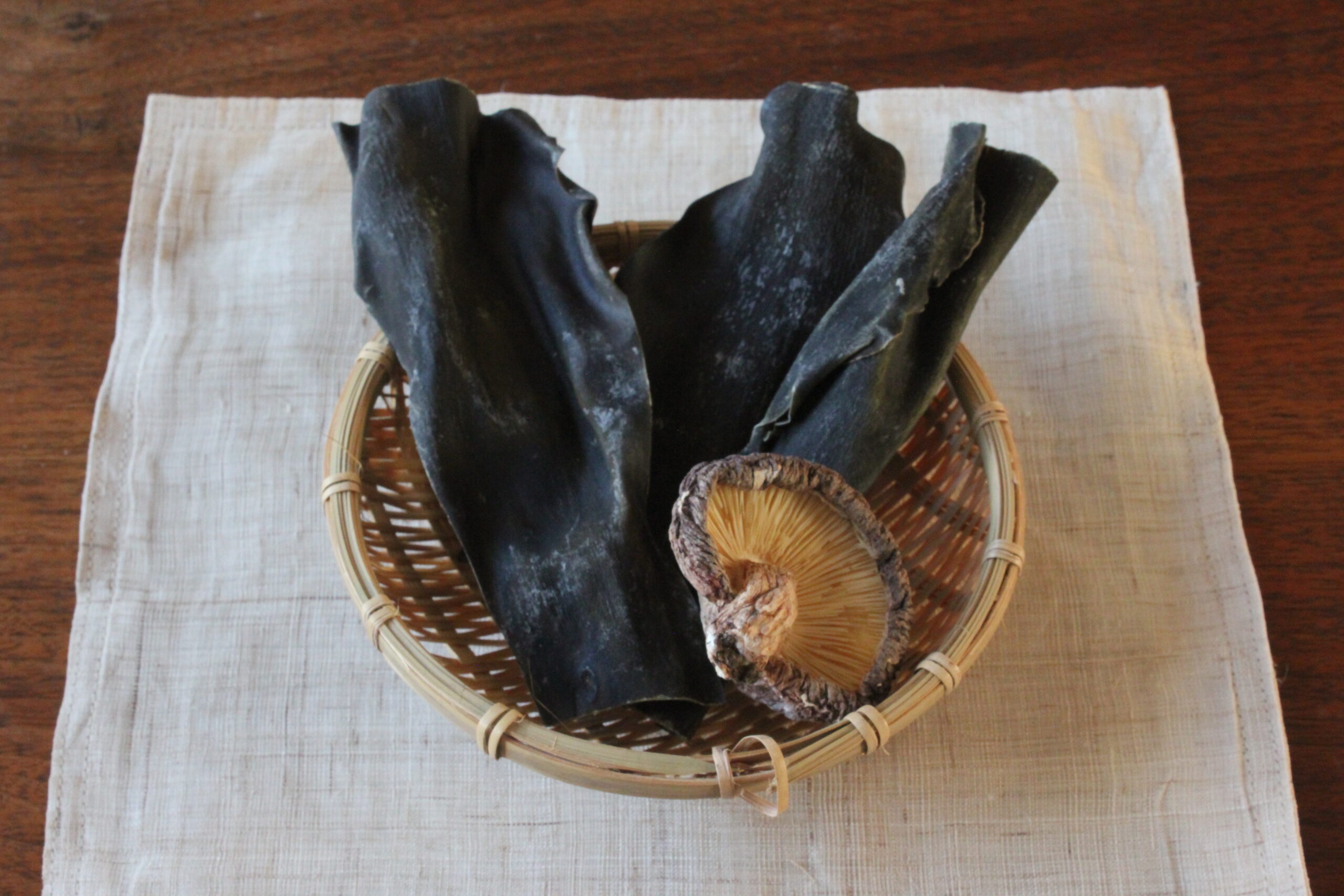There are three types of vegan broths that are essential for Japanese cooking—kombu broth, shiitake broth, and combo-shiitake broth. As I mentioned in the 7 Essentials for Authentic Japanese Cooking, these broths are the key for umami flavor, which is a great part of Japanese cuisine. The broth is not only used for making miso soup, but also for various other purposes—cooking, sautéing, as well as making sauce. The umami brings depth, roundness, and complexity to the overall flavor.
Kombu seaweed is full of glutamic acid. Glutamic acid is one of the amino acids which compose the protein. Besides some glutamic acid, dried shiitake has abundant guanylic acid which is the nucleic acid, indispensable for the cell’s regeneration. When glutamic acid and guanylic acid come together, there is a synergetic increase of umami happening. Interestingly, guanylic acid only exists in the dried shiitake but not in the fresh shiitake. When comparing both dried and fresh, the glutamic acid as well as guanylic acid in the dried shiitake increases 150 times more than fresh shiitake (www.umamiinfo.jp).
How to make broth
Making these broths are very simple and yet requires time (half a day). I recommend planning your meal in advance so that you can start making this broth prior to the main cooking.
Kombu broth
- Put the kombu seaweed in the pot and pour in the water. For 1L water, I normally use 10 grams of kombu.
- Let it soak for over 6 hours.
- Turn the heat to the lowest, and simmer to warm the pot. This process is to further extract the kombu’s flavor into the water. It has to be simmered, as kombu’s glutamic acid cannot be extracted well when the water temperature goes above 80°C. The key is to look at the side of the pot inside. When small bubbles are present there, it is the sign that you have it at the right temperature.
- Simmer for 1-3 hours, adding some water occasionally as it gets evaporated.
*You can make kombu broth also just with the soaking process. And yet, the flavor gets extracted incomparably more when you do the simmering process.
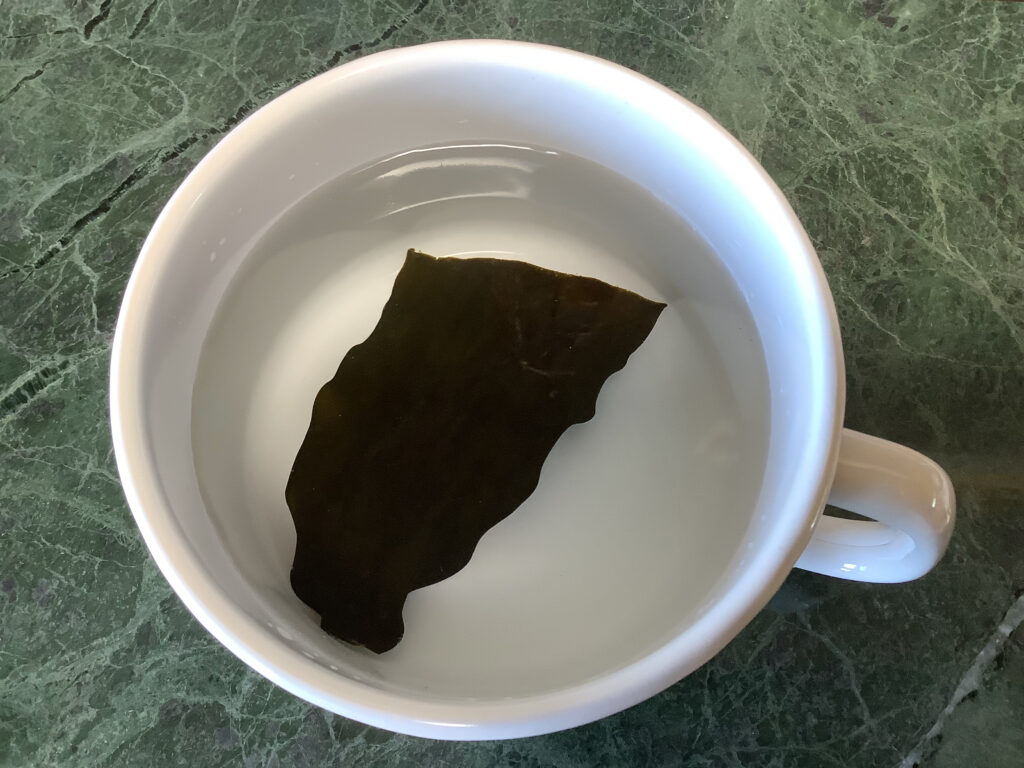
Soak in water. 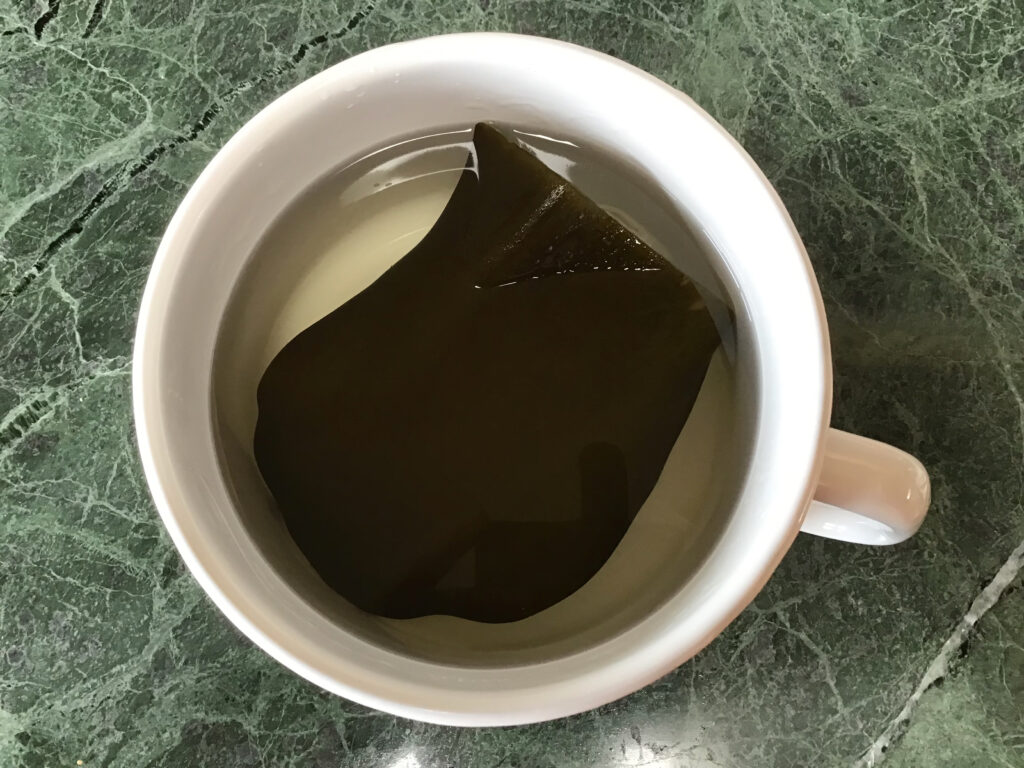
After soaking overnight. 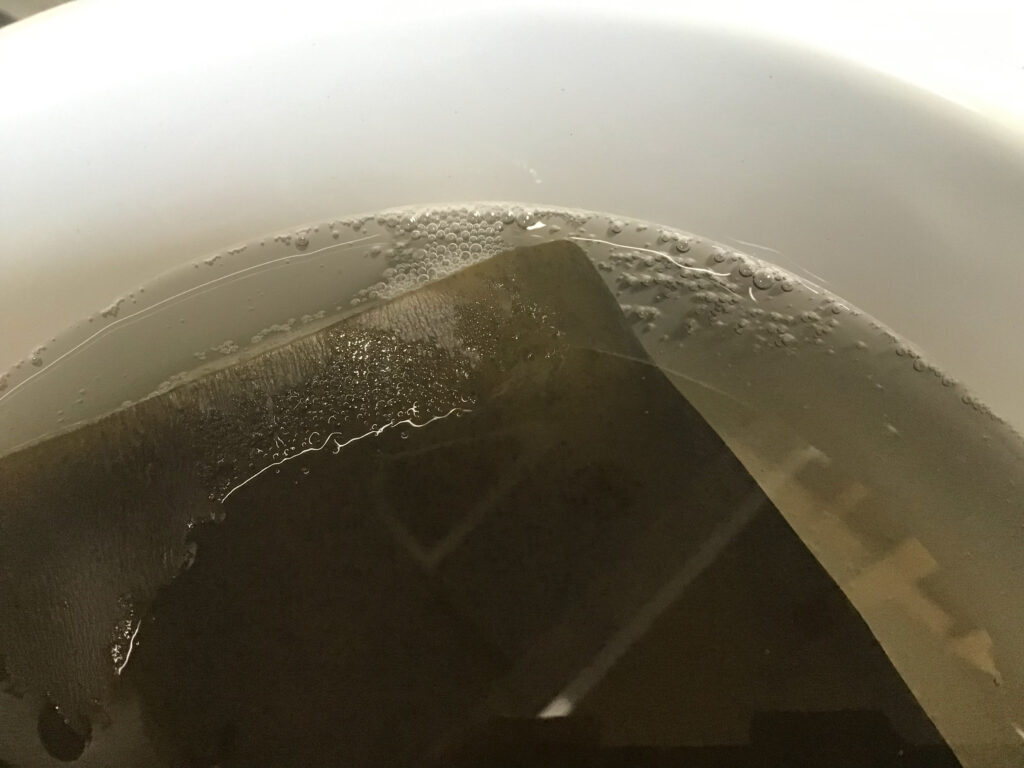
Start simmering. The sign for the right temperature is the bubbles on the wall of the pot. 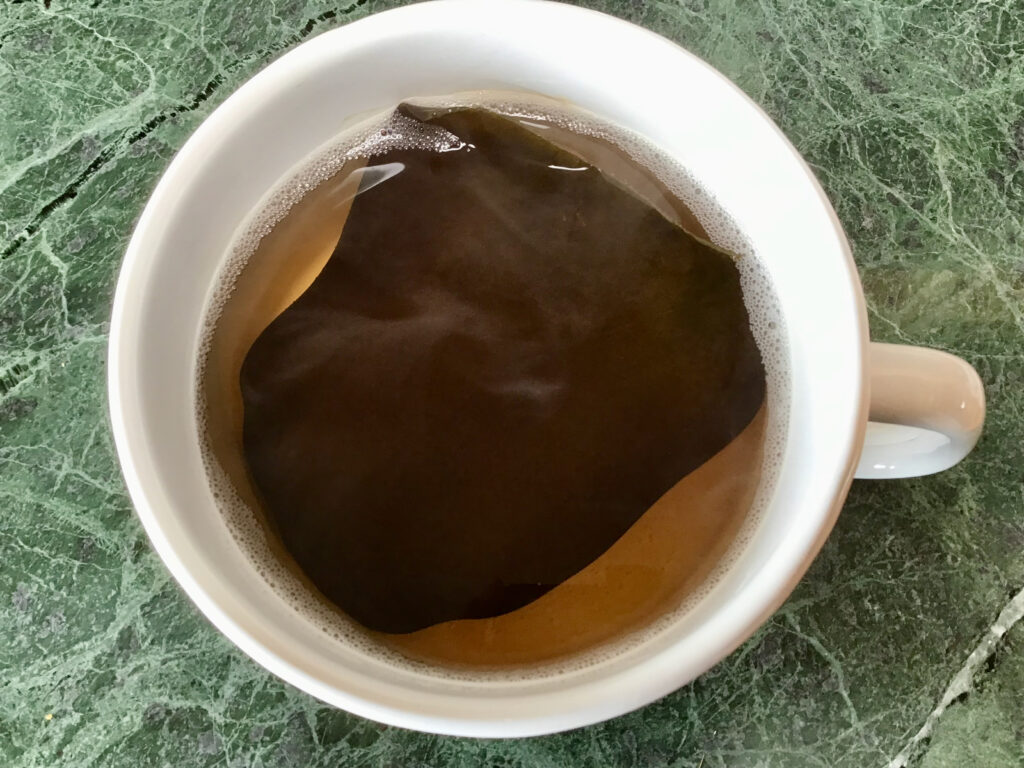
Beautiful broth is ready!
Shiitake broth
- Put 1-3 dried shiitake into a container and pour in 1 cup of water.
- Put the container in the refrigerator and let it soak for over 10 hours.
- (optional) Heat the broth with shiitake in a pot and bring it to a boil. Once it’s boiled, bring it into a simmer and remove the foam. This will allow the broth to have a clear and sweet flavor.
*Soaking in the fridge is important as the cool temperature allows the flavor of shiitake broth to be extracted much better.
When using high quality shiitake mushrooms (which grow on the wood), it can become quite pricy. So, I wrote a wide range of options for the amount of shiitake you will soak. The ideal amount for getting a rich beautiful broth is using about 12g dried shiitake for 1 cup of broth. And yet, don’t worry. 1 shiitake in a cup of water will still create beautiful light shiitake broth!
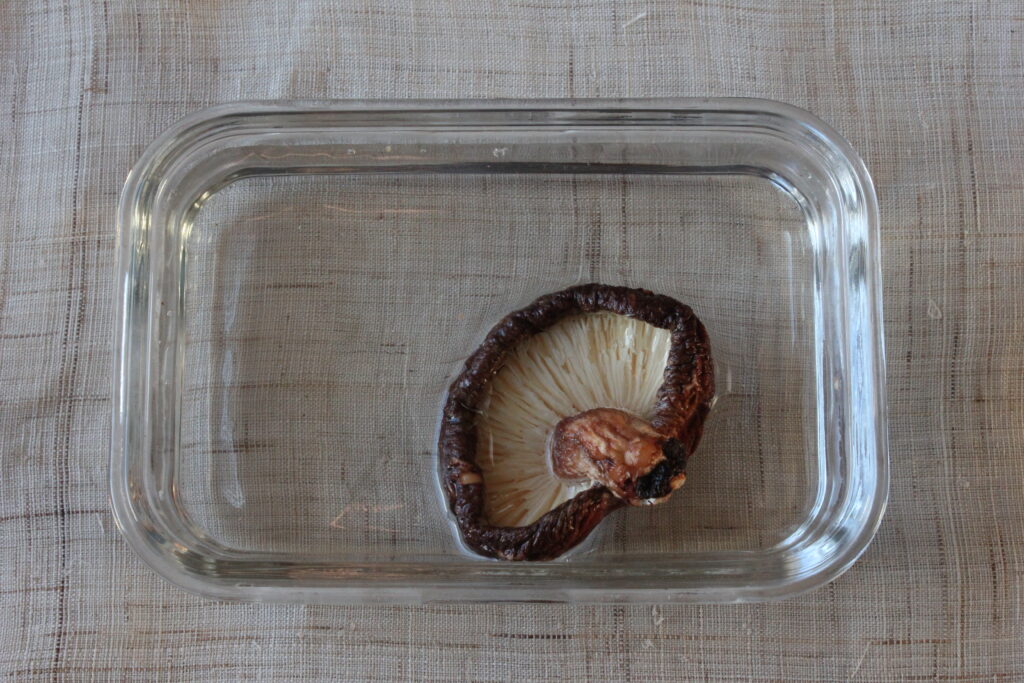

After soaking for overnight in the refrigerator
Kombu-shiitake broth
- Put kombu and dried shiitake into a container, then pour water in. For 1 liter of broth, I normally use 10 gram of kombu and 15 gram of dried shiitake.
- Let it soak in the fridge for over 10 hours.
- Pour water into a pot with kombu and shiitake.
- Turn the heat into smallest simmer to keep warming the broth at around 60°C. As I mentioned for the kombu broth, this process is to further extract the kombu’s flavor into the water. The key is to look at the side of the pot inside. When small bubbles are present there, it is the sign that you have it at the right temperature.
- Simmer for 1-3 hours, adding some water occasionally as it gets evaporated.
- Take out the kombu and bring the broth to a boil.
- Simmer for about 10 minutes and remove the foam on the surface of the broth.
Storing the broth
You can store the broth in the fridge for up to 3 days. The longer you store, the more flavor you will loose. So, if you want to store longer, I will recommend that you freeze it. When freezing, I would also make the broth as ice cubes so that I can utilize them into various ways of cooking as the umami agent.
